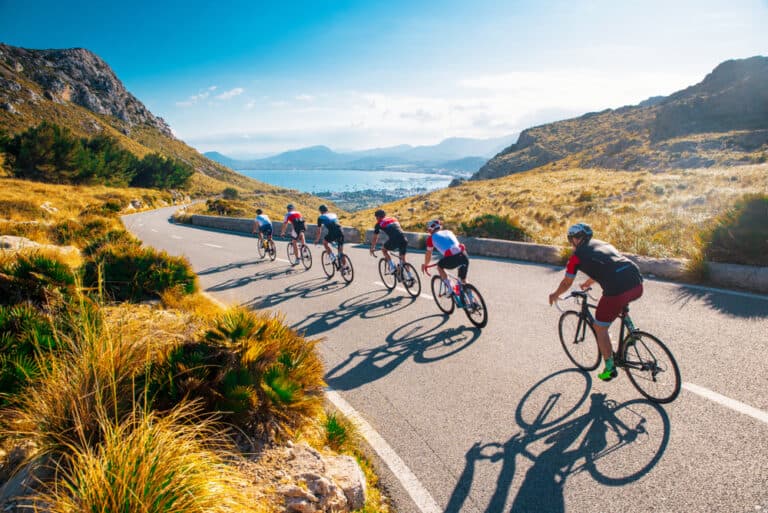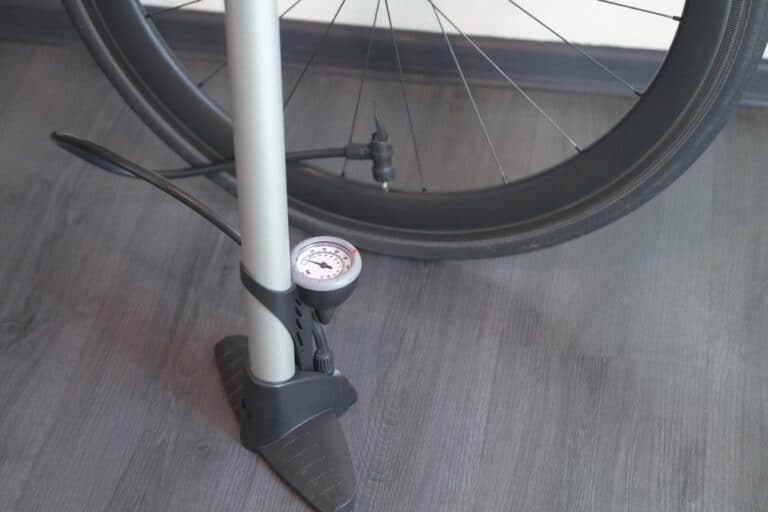Calories Burned Biking 20 Miles

As an exercise , cycling is one of the most effective and efficient methods to burn calories, and because it is a low-impact sport, the wear and tear on the body’s limbs and joints are significantly lower than that of running. How many calories you burn biking 20 miles will depend on your body weight, speed, and how long you ride.
A 150lb biking for 20 miles at 12mph would burn 953 calories, while a person weighing 200lb and biking for 20 miles at the same speed would burn 1270 calories. This is because a person weighing more expends more energy to power the bike at the same speed as someone who weighs less.
To better understand the dynamics behind burning off calories while biking, we need to consider a few other elements, like whether this is on-road or mountain biking, the amount of climbing in the ride, as well as the speed and duration of the ride – so kit up and let’s go!
How Many Calories Would Your Burn Riding For 20 Miles Depends On Weight
For this section, we look at the calories burned for five different people with weights of 150lbs, 175lbs, 200lbs, 225 lbs, and 250lbs to compare the difference between calories burned biking.
We will use a set speed of 12mph or 19,2km/h, which is a moderate speed for a bike ride. The distance is set at 20 miles or 32 km, an average distance that would include a balance of flats, downhills, and climbing.
The primary factor when calculating biking calories burned is your weight as we have the distance and speed constant, so looking at the table below, you will see that people that weigh more burn more calories over the same space at the same speed.
| Rider Weight | 150lbs | 175lbs | 200lbs | 225lbs | 250lbs |
| 20 miles/32km | 953 cal | 1111 cal | 1270 cal | 1429 cal | 1588 cal |
This table does not account for the time, only the distance, but we will look at the effect of speed/time and how it affects the calories burned later.
Looking at the table, you can see a 25lb difference in weight between the 150lb rider and the 175lb rider is a calorie difference of 154 calories or 16%.
For a 50lb difference between 150lbs and 200lbs, that calorie difference is 316 calories or 33% more calories burned bike riding, while there is only a 25% difference in weight.
When the weight difference is 100lbs, the difference is 635 calories burned or 67% between a 250lb rider and a 150lb rider.
What Is The Average Weight Of A Professional Cyclist
While this may seem quite significant, you need to remember that calories burned are relative, and a 150lb rider would be more energy efficient on a bike than a 250lb rider- this is why professional male riders like those in the Tour De France are all lightweight riders seldom getting above the 155lb range on average.
When you consider that a specialist climber would only weigh about 136lbs as the lightest rider, and a time trialist would average around 164lbs, you can see that if you are heavier than 170lbs, you will be less efficient as a rider than someone that weighs about 170lbs or less.
This is because the effects of gravity and friction are more pronounced on a bike with a heavier rider than on one with a lighter rider. This is why there is such a difference between the calories burned over the same distance and speed for a rider at 150lbs and one at 250lbs.
The heavier rider works harder to propel their weight and burns more calories. Another consideration is the speed you cover 20mile at, so let’s look at the difference that riding faster over 20 miles makes compared to the 12mph in terms of calories burned.
The Effect Of Speed On Calories Burned
To start with, 20 miles or 32km would be considered a relatively short ride if you are a competent rider, while as a beginner, this would be a strenuous ride. As an intermediate rider, you would have an average speed of around 15 mph; an advanced rider could be averaging 20mph or more.
If we look at the table below, you can see how speed affects the calories burned riding for one hour at the listed speed ; plus, the faster you go over 20 miles, the shorter the time would be to complete the ride.
| 150 lbs | 175 lbs | 200 lbs | 225 lbs | 250 lbs | |
| 12 mph | 572 cal | 667 cal | 762 cal | 857 cal | 953 cal |
| 14mph | 714 cal | 833 cal | 953 cal | 1072 cal | 1191 cal |
| 16mph | 857 cal | 1000 cal | 1143 cal | 1286 cal | 1429 cal |
Taken at increments of 2mph, you can already see the difference in calories. If you take the 150lbs rider, increasing speed to an average of 14mph increases the calories burned by just under 25%, and increasing the speed to 16mph, increases the calorie burn by 49%!
This increase of 25% more calories burned per 2mph increase in speed applies across all the weight divisions, so you can take your weight and determine how many calories you would burn if you were able to slightly increase your average speed accordingly.
While two mph may not sound like a lot, the effort required to achieve this will mean quality time in the saddle training, monitoring your calories burned, and average speed as you get stronger.
How Far And How Fast Would You Ride To Burn One Pound Of Body Fat
Many people that ride recreationally are doing so for weight loss. To understand how many calories you would need to burn to lose one pound of body fat, we need to know how many calories constitute a pound.
There are 3500 calories in one pound of body fat; to lose this in one ride, you would need to put some serious time on the saddle. Realistically, this would not be viable for most people, and to understand why you have to consider the following.
If you are a 150lb rider and want to burn 3500 calories at 12mph, you would need to ride for 122 miles at that speed, and at 16 mph, you would have to ride for 80 miles.
For a 200lb rider to burn one pound of body fat at 12mph, you would need to ride for 91 miles; at 16mph, that distance would be 61 miles.
As a 250lb rider at 12mph, you would have to ride for 73 miles, and at 16mph, you would have to ride for 49 miles.
By comparison, a rider in the Tour De France would burn around 120 000 calories over the entire tour or an average of 6000 calories per stage, and their average speed is about 25mph!
Before you think that 25mph isn’t that fast, you need to remember how much climbing they do and how fast they can descend and race on the flats to appreciate the power and fitness these riders have!
How Does The Amount Of Climbing Affect Calories Burned Biking 20 Miles
The answer to the number of calories burned biking 20 miles is a varied one as multiple factors contribute to this equation. Aside from the rider’s weight, speed, and duration of the ride, there is also the consideration of the distance and frequency of climbing.
Riding any bike uphill requires more energy than riding it on the straight or downhill, so that would need to be considered on your ride. With most cyclists using some form of the app when riding, you would enter your statistics into the app, then map your ride using your stats and the ride profile to calculate the calories burned.
The incline of the hill and the distance of the climb greatly impact how much energy is burned on the climb, so the steeper and longer the hill, the more calories would be burned. For elite cyclists, a 20mph flat ride would burn about 7.5 calories per mile, but an incline of 8 degrees would burn around 50 calories burned biking per mile, which is 6,7 times more!
If you want to burn more calories biking over 20 miles, add some climbing!
How Many Calories Per Mile Would You Burn
To break this down to an even smaller level, you could also calculate how many calories burned biking 20 miles by looking at how many calories per mile you would burn based on your weight and average speed.
Here, you can see clearly that heavier riders burn more calories burned from biking per mile than lighter riders.
A 150lb rider averaging an easy pace of 14 mph would burn around 48 calories per mile, and if that speed were 20mph, the calories burned would increase to 75 calories per mile, and the ride length at those speeds would be one hour 25 minutes at 14 mph and one hour at 20 mph.
A 200lb rider would average 64 calories per mile at 14mph and 75 calories per mile at 20mph, and while the duration of the ride would be the same, the heavier rider would burn more calories.

Conclusion
If you want to know how many calories you will burn biking 20 miles, you need to consider your weight and your average speed to get to an approximate figure, and if you want an accurate reading, then your cycling app would be able to provide that.
As you can see from the tables presented, cycling is a great way of losing weight by burning calories, and while 20 miles is a moderate distance for intermediate cyclists, it is still a great workout, especially where you have good climbs on the way!
Resources
- https://caloriesburnedhq.com/calories-burned-biking/
- https://cyclingbeginner.com/body-size-of-professional-cyclists-weight-height-bmi
- https://www.cyclingweekly.com/news/racing/tour-de-france/tour-de-france-average-speed-how-fast-are-riders-at-the-tour-465169
- http://physicalcycling.com/burning-calories







